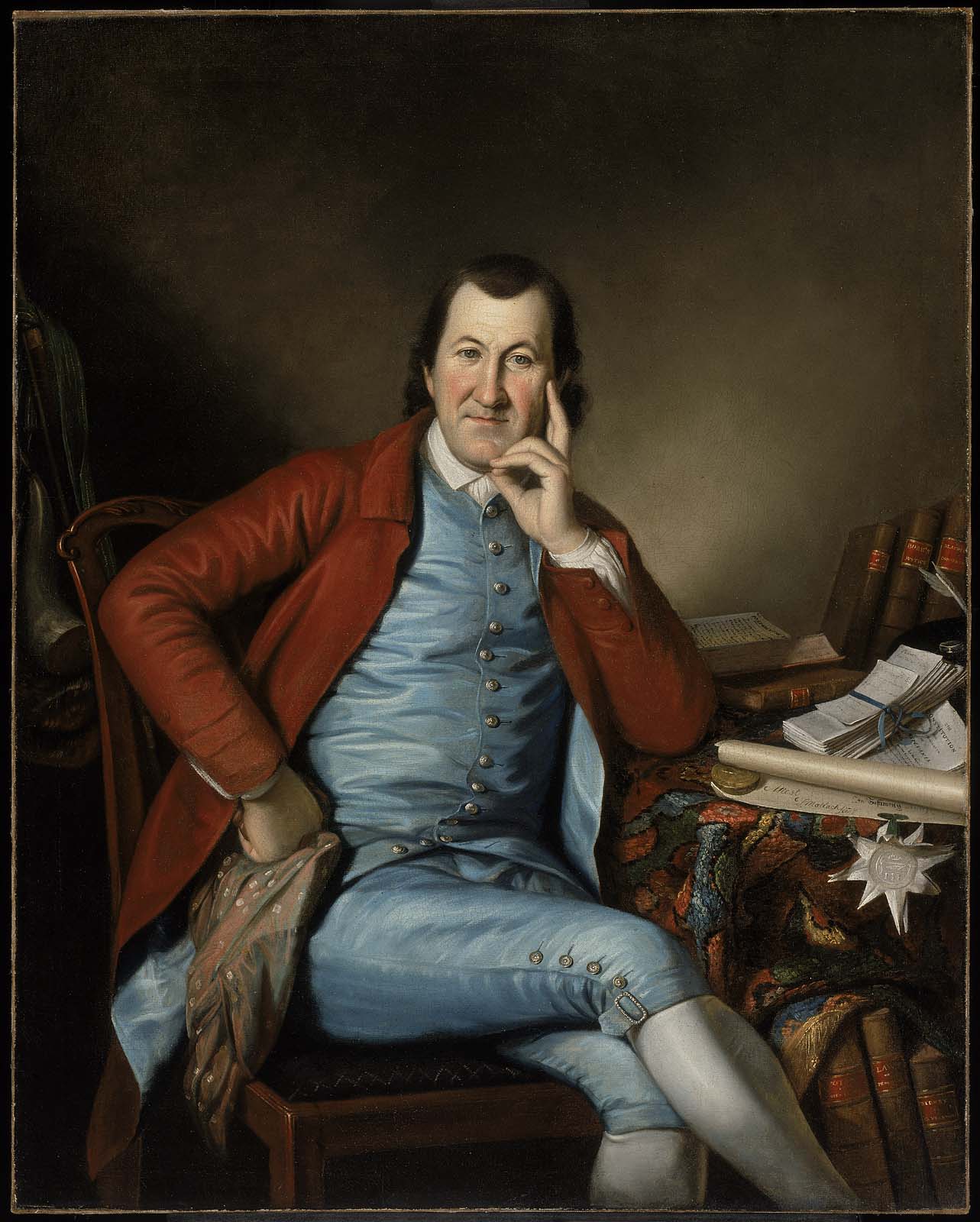Timothy Matlack

Timothy Matlack (c. March 28, 1730 – April 14, 1829) was a merchant, surveyor, architect, statesman and patriot in the American Revolution. A delegate from Pennsylvania to the Continental Congress in 1780, he emerged during the Revolutionary period as one of Pennsylvania's most provocative and influential political figures.
Biography
Timothy Matlack the second was born in Haddonfield, New Jersey, to Martha Burr and Timothy Matlack, a Quaker merchant and brewer. In 1745, the family moved to Philadelphia, where Timothy continued his education in the Quaker Friends' School. In 1748 he married Ellen Yarnall, the daughter of Quaker preacher Mordecai Yarnall; the couple had five children (William, Mordecai, Sibyl, Catharine, Martha). After Ellen's death in 1791, Matlack married widow Elizabeth Claypoole Copper in 1797; they had no children.
In 1765, Matlack was disowned by the Philadelphia Religious Society of Friends, or Quakers, for his un-Quaker like business practices and lack of devotion to Quaker constructs. One of the earliest opponents of slavery, Matlack felt the Quakers were not moving quickly enough on abolition.
At the outset of the American Revolutionary War, Matlack served as clerk to Charles Thomson, the Secretary of the Continental Congress. In this role, he engrossed the copy of Declaration of Independence that was signed by the Continental Congress and is now on display in the National Archives. Matlack is also known to have penned in 1775 George Washington's commission as Commander-in-Chief of the Army of the United Colonies (Continental Army).
Matlack was also commissioned a Colonel in the local militia known as the Philadelphia Associators, under which he commanded the 5th Rifle Battalion, also known as the "Shirt" Battalion. Campaigning in New Jersey under General John Cadwalader, Matlack's battalion saw action in the battles of Trenton and Princeton. During the Revolution Matlack was also appointed to provision the Continental Army.
Matlack was active in the revolutionary politics of Philadelphia, serving on committees of inspection and observation, and attending the conference in June 1776 that called for a convention to draft a new state constitution. As a delegate to that convention, his radical Whig faction was instrumental in drafting the Pennsylvania Constitution of 1776 and its declaration of rights. He was an ardent defender of the Constitution against its moderate republican critics, most notably James Wilson. He served in a variety of officers thereafter, most importantly as the first Secretary to the Supreme Executive Council of the Commonwealth of Pennsylvania.

While serving as Secretary of the Supreme Executive Council, Matlack played an instrumental role in the May, 1779 court martial of General Benedict Arnold in Morristown, serving as one of the prosecution's chief witnesses during the trial.[1] The third charge read against Arnold claimed that he imposed "menial offices on the sons of freemen of the State," a reference to an incident involving Matlack's son, William, who was allegedly called upon to fetch a barber for the General while assigned to his personal service.
After the Revolution, Matlack served in a variety of government posts in Pennsylvania, including as the first Director of the Bank of North America from 1781-1782. At the height of his political and social influence, Matlack was elected a trustee (1779-1785) of the University of the State of Pennsylvania (presently the University of Pennsylvania). In 1780 Matlack was elected to the American Philosophical Society, where he served as Secretary of the organization from 1781 to 1783.
On April 9, 1790, Matlack was commissioned along with Samuel Maclay and John Adlum by the Supreme Executive Council to survey the headwaters of the Susquehanna River and the streams of the New Purchase, the northwestern portion of the state recently purchased from the American Indians. They were also charged with exploring a route for a passageway to connect the West Branch with the Allegheny River.[2]
In 1781, Matlack helped found along with Samuel Wetherill the Society of Free Quakers, which consisted mostly of Quakers disowned for their participation in the American cause for independence. He helped raise a substantial sum of money to construct the Free Quaker Meeting House at the corner of Fifth and Arch streets in downtown Philadelphia. [3] He is attributed with the design of the Meeting House and his brother Josiah Matlack was employed in its construction. After his death in Holmesburg, Pennsylvania on April 14, 1829, Matlack was interred in the Free Quaker Burial Ground on South Fifth Street, Philadelphia. His remains were removed from the Free Quaker Burial Ground in 1905 and reinterred in Matson's Ford, Montgomery Co., Pennsylvania, (Flatlands of the Schukill River) opposite Valley Forge.
Popular Culture
Matlack's penmanship in the Declaration and other works has inspired a number of modern typefaces.

Notes
- Stackhouse, A. M. Col. Timothy Matlack, Patriot and Soldier. [N.p.]: Privately printed, 1910.
- Landis, Bertha Cochran. Col. Timothy Matlack. Papers read before the Lancaster County Historical Society, Vol. XLII-No.6; Lancaster, PA: 1938.
- Simpson, Henry. The Lives of Eminent Philadelphians Now Deceased. Philadelphia: William Brotherhead, 1859; pg. 685.
- Johnson, Allen and Dumas Malone, eds. "Dictionary of American Biography." New York: Charles Scribner & Sons, 1933, vol 12, pp 409-410
Further reading
- Matlack, Timothy. An Oration, delivered March 16, 1780 : before the patron, vice-presidents and members of the American Philosophical Society, held at Philadelphia, for Promoting Useful Knowledge. Philadelphia: Styner and Cist, 1780.
- Wetherill, Charles. History of The Religious Society of Friends Called by Some The Free Quakers, in the City of Philadelphia. Philadelphia: Printed for the Society, 1894
External links
- United States Congress. "Timothy Matlack (id: M000246)". Biographical Directory of the United States Congress.
- Pennsylvania Historical Marker
- Biography, Timothy Matlack at the University of Pennsylvania
- Free Quaker Meeting House architectural drawing by Timothy Matlack, Library of Congress
- Gaspare J. Saladino. Matlack, Timothy. American National Biography Online, February 2000.
